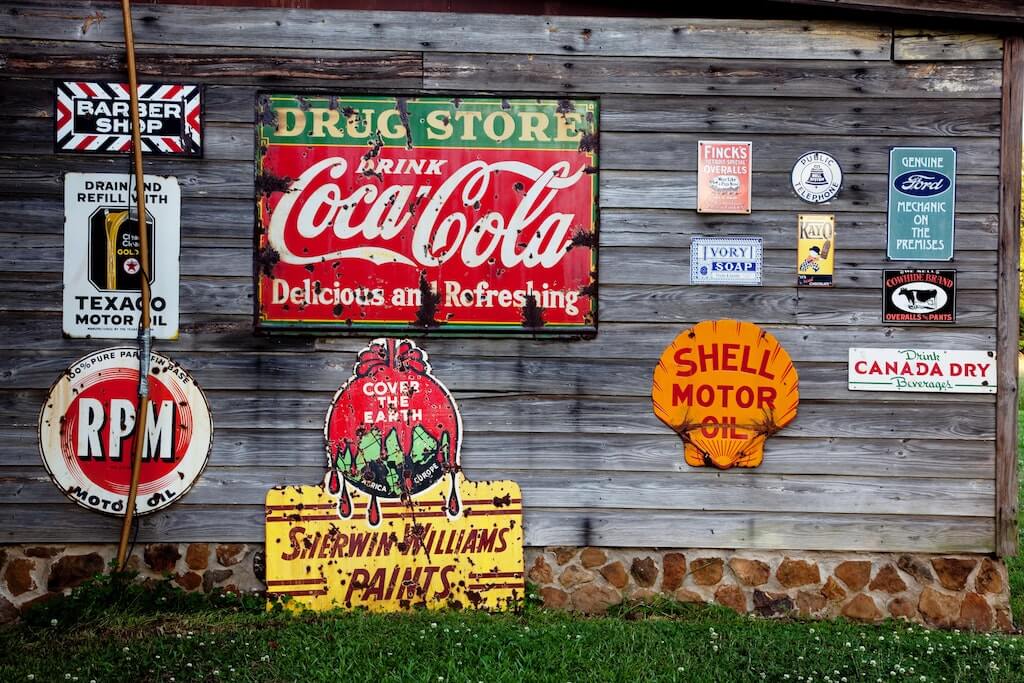Given Re-view is in the marketing business, we thought it was about time we learnt a little bit more about the history of the marketing industry, and how we got to where we are today.
This took us down a rabbit hole of books, audio histories, academic journal entries and campaign adverts and we’ve now reviewed over 100 different sources – so you don’t have to!
The term “marketing” was first used in the 15th century, when it referred to the process of going to market to buy or sell goods. To market something, meant literally, to take it to market and sell it. Over time, this term evolved and took on a broader, more generic meaning to refer to “the activities of businesses and individuals to promote and sell products or services”.
In the early to mid 19th century, businesses started to understand the importance of understanding customer needs and desires, and using that knowledge to sell more effectively. Some notable 19th century examples of marketing campaigns are:
- Coca-Cola’s “Drink Coca-Cola” campaign from 1886
- Kodak’s “You Press the Button, We Do the Rest” campaign from 1888
- Pears’ “Soap that Floats” campaign from 1890
Amazingly, the use of customer testimonials in marketing can be traced back to these very early days of advertising. In the late 1800s and early 1900s, testimonials were often hand-written statements from customers that were used in print ads and on product packaging. One of the first brands to utilise customer testimonials was Quaker Oats. Quaker Oats ran a series of print ads in the early 1900s that featured testimonials from customers who had used their products. These testimonials were designed to build trust with potential customers and convince them to try Quaker Oats products. Given Quaker Oats are still one of the dominant brands in cereals, I think it’s now safe to say that it was effective!
However, it wasn’t these large splashy campaigns from the likes of Quaker Oats and Coca-Cola that typified the advertising of the day. The advertising that typified the century was more humble in nature, and belonged in daily records in newspapers.
Following the shift from hand-crafted to steam-powered printing came the ability to mass produce inexpensive newspapers. With a boom in the number of the newspaper but a limited supply of readers who could afford to buy the newspaper, newspapers were struggling to make money. Enter the first business model innovation; in return for advertising a business in print, businesses would pay the newspaper. This model quickly became popular, and newspapers all over the United States quickly adopted it. However, it wasn’t until a subsequent innovation in business model took hold, that advertising really came to the fore. In the 1830’s, an enterprising business man realized that advertising could subsidize the cost of the paper. Enter business model two; by reducing the cost of the paper, more people would be able to buy it and distribution could be increased. Penny press papers were born.
Penny press newspapers were a new type of cheap, tabloid-style newspaper mass-produced in the United States from the 1830s onwards. Famous for costing only one cent (equivalent to $0.31 in 2021), while other newspapers cost around six cents, penny press papers were revolutionary in making the news accessible to middle class citizens at a reasonable price. This burgeoning desire for cheap newspapers also meant there was increased demand for advertisers – which introduced an incredible number of new businesses to the act of promoting their product or service.
During the mid-20th century, marketing continued to evolve as businesses increasingly relied on mass media to reach large audiences. The development of new marketing channels, such as television and radio, also helped to boost marketing efforts. This was the era of “Mad Men”-style advertising, when creative campaigns were used to sell everything from cigarettes to cars. This also coincided with an increase in the frequency and use of customer testimonials, as companies increasingly realized their power to build trust and credibility with potential customers. As more and more companies twigged to testimonials potential, technology continued to improve and costs associated with advertising dropped, the market to advertise became more crowded and competitive.
With an increase in competition, businesses and ad agencies responded by becoming more scientific in their ad spend, and began to use data and insights from market research to inform their decisions. This led to the development of new marketing concepts, such as segmentation, targeting, and positioning.
Some notable examples of 20th century advertising include:
- General Motors’ “See the USA in Your Chevrolet” campaign from 1950
- Volkswagen’s “Think Small” campaign from 1959
- Pepsi’s “The Pepsi Generation” campaign from 1963
In the late 20th century and early 21st century, marketing has become more complex, as businesses have had to adapt to the changing needs of consumers in a more globalized and digital world.
The 21st century has seen the rise of digital marketing, which uses the internet and digital devices to reach and engage customers. This has led to the development of new marketing channels, such as social media, and new marketing strategies, such as content marketing, inbound marketing, social media marketing, search engine marketing, and email marketing are all examples of common activities within modern businesses. It’s exhausting!
Despite all the activities and over two centuries of marketing innovation, one thing has remained the same: marketing efforts need to be strategic and focused on creating a strong, trusted and memorable brand.
Which is where customer testimonials come in.
Today, customer testimonials are used extensively on websites and social media, as well as in traditional advertising. They are often featured prominently on homepages and product pages, and they are also used in email marketing and social media campaigns. Customer testimonials are a powerful marketing tool because they provide third-party endorsements that can build trust and credibility with potential customers. They were effective 200 hundred years ago, and remain just as effective today.
If you’re interested in building your trust with your brand using customer testimonials as Quaker Oats did all those years ago, get started today for free at www.re-view.ai.
Related articles you might also enjoy:

